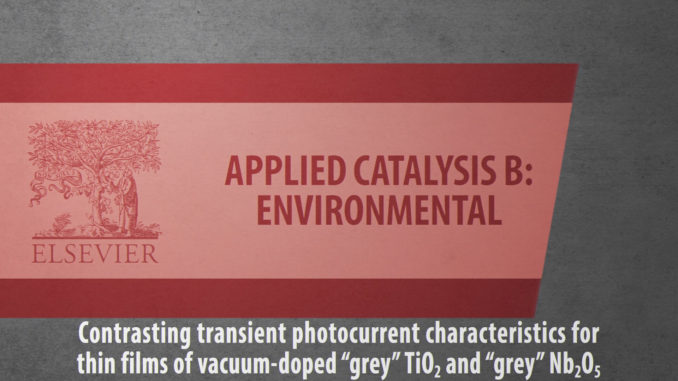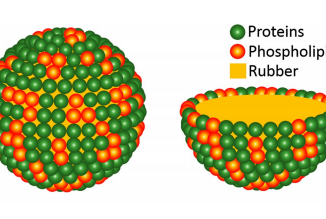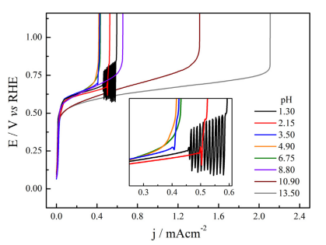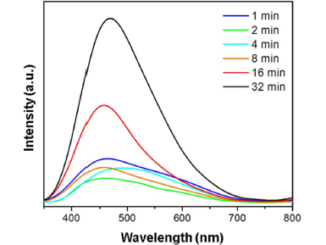
Contrasting transient photocurrent characteristics for thin films of vacuum-doped “grey” TiO2 and “grey” Nb2O5
Abstract: Photo-catalytic performance for oxide films, here for inkjet-printed TiO2 (ca. 1 mu m thickness on PTO) and for spray-pyrolysis-coated Nb2O5 (ca. 1 mu m thickness on PTO), is affected by oxygen vacancies that form during vacuum-heat treatment at 550 degrees C. The effects of the oxygen vacancies are associated with formation of Ti(III) and Nb(IV) sites, respectively, and therefore optically visible as “grey” coloration. Photo-electrochemical light-on-off transient experiments are performed in the limit of thin film photoanodes, where front and back illumination result in the same photo-current responses (Le. with negligible effects from internal light absorption gradients). It is shown that generally the magnitude of photo-currents correlates linearly with light intensity, which is indicative of dominant “photo-capacitive” behaviour. At an applied voltage of 0.4 V vs. SCE (in the plateau region of the photo-current responses) the potential and also the pH (going from 1.0 M KOH to 0.1 M HClO4 in the presence of methanol quencher) have no significant effect on photo-currents; that is, surface chemical/kinetic effects appear to be unimportant and interfacial hole transfer may be rate limiting. Under these conditions (and based on a simplistic mechanistic model) changes in photo-currents introduced by oxygen vacancy doping (detrimental for TiO2 and beneficial for Nb2O5) are assigned primarily to changes in electron mobility.
Author(s): de Araujo, MA; Gromboni, MF; Marken, F; Parker, SC; Peter, LM; Turner, J; Aspinall, HC; Black, K; Mascaro, LH
APPLIED CATALYSIS B-ENVIRONMENTAL
Volume: 237 Pages: 339-352 Published: DEC 5 2018
DOI: 10.1016/j.apcatb.2018.05.065




